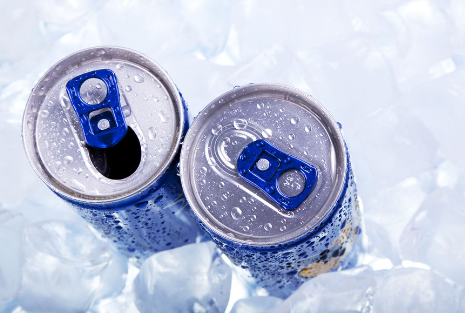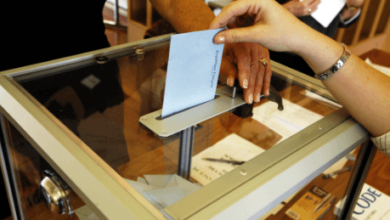What do you think you know about Energy Drinks?

Ever wondered what you really know about energy drinks? We all know that it is supposed to keep you awake while you continue working or studying. There are a lot of energy drinks out there, and the most common one is Red Bull. Have you ever wondered what’s in your energy drink?
Since we brought up Red Bull, let’s remark that their marketing claims it will give you wings. By 2020, it has overtaken all other energy drink brands as the third most valuable soft drink consumed. The bland flavor of this energy drink, which is packaged in a tall and slender silver-blue can, makes it simple to identify. The beverage is made up of various concentrations of caffeine, taurine, B vitamins (B2, B5, B6, and B12), glucuronolactone, and simple sugars (sucrose and glucose). In some flavors, a trisodium citrate/citric acid buffer is used as a substitute, which also adds electrolytes to the drink. The artificial sweeteners acesulfame K and aspartame or sucralose have been added to Red Bull to make it sugar-free.
There are accusations regarding the effects of this energy drink, despite the fact that it is widely consumed. Due to complaints that were logged as early as 1997, the UK’s Advertising Standards Authority put a limitation on advertising the beverage in 2001.
An energy drink is often a beverage with high levels of caffeine, additional sugars, other additives, and legal stimulants including guarana, taurine, and L-carnitine. We already know that it improves our energy, alertness, and focus. But did you know that it also quickens your respiration, heartbeat, and blood pressure? It does, indeed.
Energy drink marketing is well known to target youngsters as well as adults. Did you know that sales rose by more than 240% both domestically and internationally? Children’s websites, computer games, television, supermarkets, and sporting events all expose kids to ads for energy drinks. According to research, children and teenagers lack maturity in certain brain regions, making them more prone to take risks and more susceptible to the reckless behaviors that are occasionally portrayed in energy drink advertising. It appeals to young people because of their persuasive marketing, peer pressure, and lack of information about any potential risks. What potential risks do energy drinks present? Energy drinks can cause dehydration, heart problems, anxiety, and insomnia, among other negative effects. We’ve compiled information regarding various dangers with energy drinks in case you weren’t aware of them.
High levels of caffeine, additional sugars, including fructose corn syrup, low-calorie sweeteners, and herbal stimulants may have amplified unfavorable health consequences on teenagers, in part because of their smaller body sizes.
The consumption of energy drinks may have detrimental effects on one’s health. Risk-taking tendencies, poor mental health, detrimental cardiovascular impacts, and metabolic, renal, or dental issues are some of these. Caffeine overdose can cause anxiety, insomnia, heart problems like irregular heartbeat and high blood pressure, and in rare circumstances, seizures or cardiac arrest. This is especially true when one has been drinking more caffeine than is recommended. Some energy drinks have a maximum dose per can of 500 mg (the equivalent of 14 cans of cola). The same health hazards are present in high sugar content drinks as in other sugar-sweetened beverages.
When alcohol and energy drinks are combined, there is also a significant risk. The majority of teenage drinkers who engage in this “trend” engage in binge drinking. According to studies, consuming this kind of cocktail can result in consuming more alcohol than consuming alcohol on its own. Energy drinks are used because they make people more alert and conceal intoxication symptoms, giving the impression that they can drink more. High-energy drink use has been associated with negative cardiovascular, psychological, and neurologic outcomes, including fatal ones, especially when combined with alcohol.
Energy drinks are not governed by the Food and Drug Administration (FDA), however, the FDA does impose a caffeine restriction of 71 mg per 12 ounces of soda, but energy drinks normally contain roughly 120 mg per 12 ounces. To get around the caffeine cap, some makers of energy drinks can decide to label their products as a supplement. Although the benefits vary greatly from person to person, caffeine is the main ingredient in energy drinks that have been found to improve physical performance in adults by boosting endurance and strength, quickening reaction times, and postponing exhaustion. However, it is unknown how these impacts may affect kids and teenagers.
We already indicated that unfavorable cardiovascular consequences can have a detrimental impact on health. More specifically, research has shown that consuming energy drinks raises arterial blood pressure and heart rate. These results were linked to the ergogenic properties of the energy drink’s caffeine concentration. In addition, excessive energy drink use has been linked to serious cardiac symptoms like ventricular arrhythmias, ST-segment elevation, and QT prolongation.
Our bodies can also experience neurological and psychological effects from it. Caffeine intoxication symptoms typically appear in energy drink consumers at doses of 200 mg or more. Anxiety, sleeplessness, gastrointestinal distress, twitching muscles, restlessness, and spells of inexhaustibility are some of the symptoms. Furthermore, a pro-nociceptive state of cortical hyperexcitability caused by increased coffee intake is linked to both acute and persistent daily headaches. The Diagnostic and Statistical Manual of Mental Disorders, Fourth Edition, has classified four caffeine-related psychiatric disorders: caffeine intoxication, caffeine-induced anxiety, caffeine-induced sleep disturbance, and caffeine-related disorder. Caffeine consumption and violent behavior, as well as conduct issues, are strongly correlated, according to research on 15- to 16-year-old teenagers.
Numerous investigations have suggested that energy drinks may increase the risk of ischemic stroke and trigger epileptic seizures. Those who consume more than 300 mg of caffeine daily may experience hallucinations. This might be explained by the high levels of cortisol that follow coffee consumption. High amounts intensify the physiological effects of stress, making the participants more likely to have hallucinations.
Regarding the impact on the digestive system and metabolism, this may decrease the diversity, activity, and gene expression of intestinal bacteria, increasing the risk of obesity and metabolic syndrome. This occurs when high sugar concentrations range from 21 g to 34 g per ounce. High fructose corn syrup, sucrose, and glucose are the basic sugar ingredients. Therefore, consumption of high-energy drinks may raise the risk of type 2 diabetes and obesity. According to some research, acute caffeine consumption reduces insulin sensitivity, which may account for the increase in blood glucose levels following the consumption of an energy drink.
It has been demonstrated that the caffeine in energy drinks improves kidney function by increasing diuresis. Energy drinks should be avoided since they may cause dehydration when used after prolonged exercise in hot weather. Additionally, caffeine increases sodium excretion in the urine, which alters plasma volume and significantly lowers cardiovascular performance during exercise.
A study on the connection between energy drinks and dental erosion was done in Sweden. Dental erosion is reportedly increased by around 2.4 times while using energy drinks. Pinto et al. have discovered that consumption of energy drinks may cause cervical dentin hypersensitivity by eliminating the smear layer from the teeth.
Maybe that’s why Lord Ping has an opinion about an energy drink getting boycotted.
Despite the drawbacks of energy drinks, keep in mind that consuming them has positive effects such as enhanced mood, improved memory, and increased attentiveness. This includes psychomotor skills including memory, focus, and reaction time. Additionally, physical stamina and subjective alertness.



